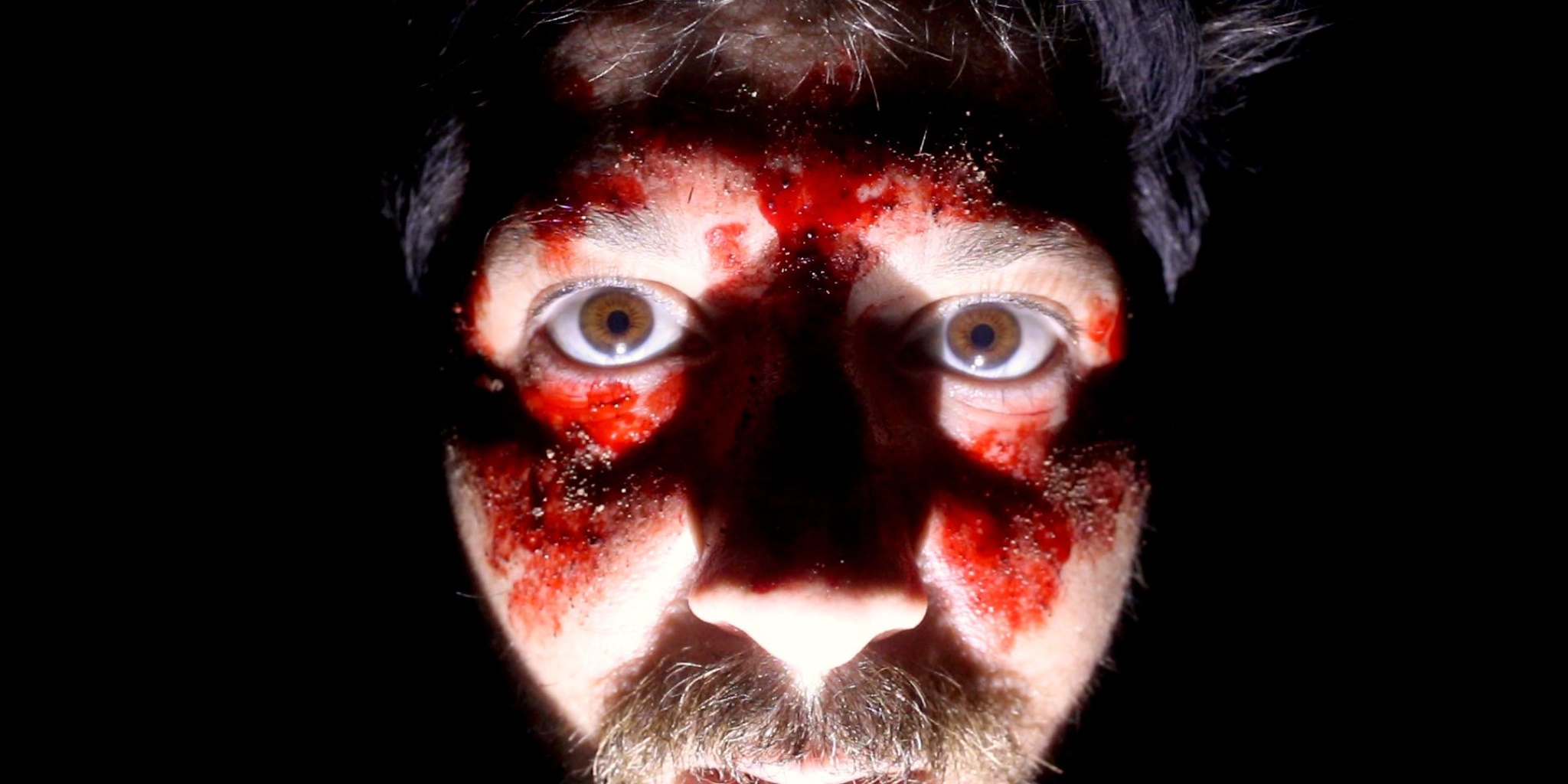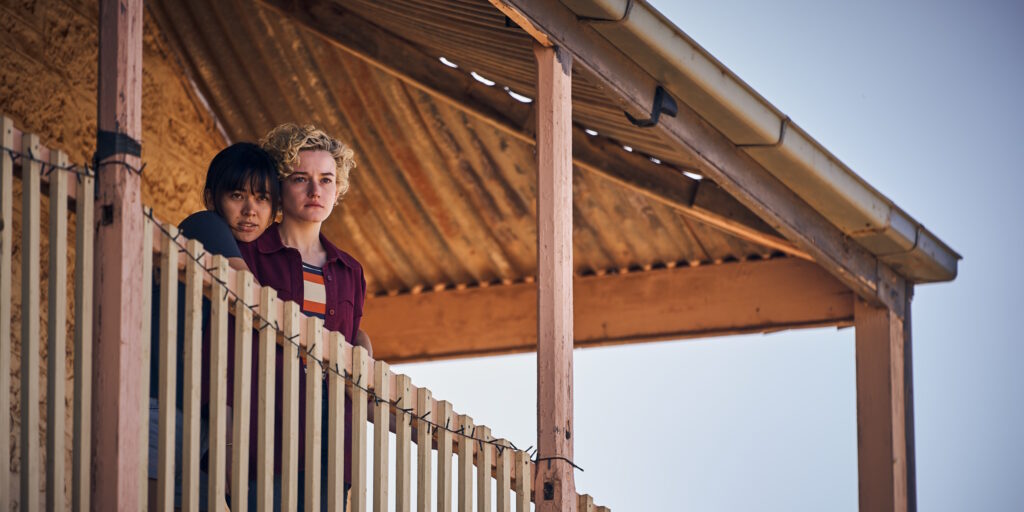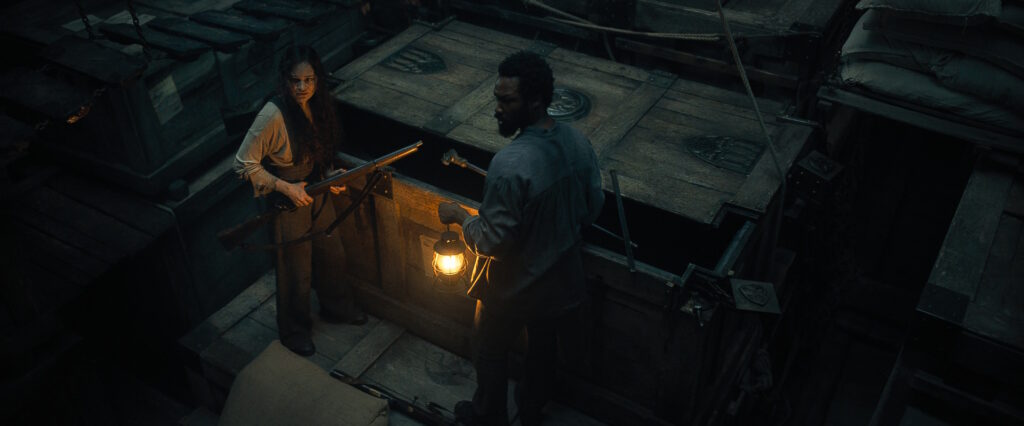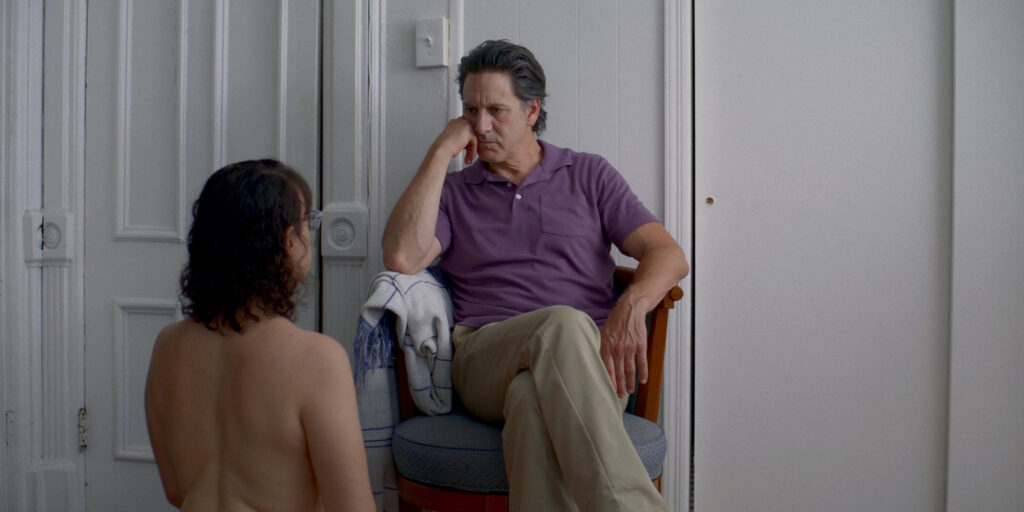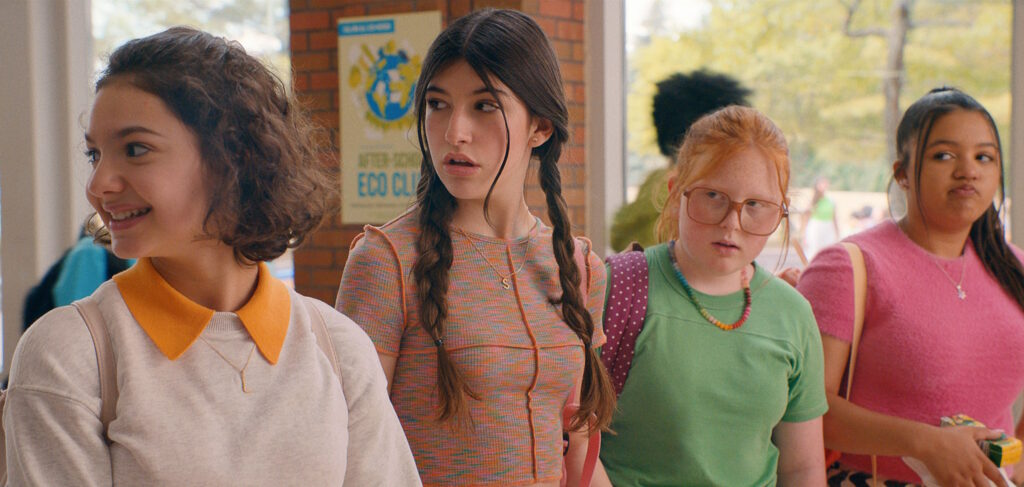Robbie Banfitch approaches an interview with a John Carpenter-esque cool. Similar to the Master of Horror, there is almost no pontificating about his new nerve-shredding horror film, The Outwaters. His motivation for this particular project will be recognizable to most aspiring filmmakers: “I was turning 30 and realizing that I hadn’t made a feature yet to submit to any festivals.” The resulting debut, however, has exceeded this modest goal and is being hailed in the same breath with another micro-budget horror sensation, Skinamarink, as one of the scariest films in recent memory.
The Outwaters follows Robbie Zagorac (Banfitch himself), his brother (Scott Schamell), and a group of friends (Michelle May and Angela Basolis) as they travel out into the Mojave Desert to shoot a music video. A few stray portents aside, all seems normal until the sun goes down. Shrouded in the darkness of the Mojave, the group is attacked by a cosmic horror. Part mumblecore drama, part psychedelic drop into Lovecraftian terror, The Outwaters is a unique blend of the deeply disturbing and charmingly mundane.
All that lack of pretension seems apparent when Banfitch states his early influences: “Jaws and Jurassic Park.” Much like those films, even in the moments that reach for an awestruck glimpse into some outerworld, The Outwaters seems perfectly content with giving less and letting the filmmaking speak for itself. “I love suspense and thrills and that adrenaline stuff,” Banfitch says. “I was watching Willow Creek, and that was the first found-footage movie since The Blair Witch Project that felt really authentically found and that made me [think], ‘Oh let me go do it. Let me go do it,’” mimicking a childlike excitement. That enthusiasm is all the more wonderful when you consider the arid, terrifying film he made.
The Mojave Desert plays a major character in the film, a place Banfitch has returned to multiple times. His previous shorts, “Card Zero” (2022) and “File VL-624” (2022), also take place in California’s iconic high desert, and for the director they both serve as “companion pieces to The Outwaters – they are all part of the same story.” When asked what draws him there, Banfitch responds in a similarly straightforward way: “I like the desert because I love a dusty, sun-beaten vibe. I love heatwaves, the billowing, rippling heat over the ground – sweat and blood and mud and dust. I love a dusty roadside diner. It’s just kind of my vibe. I like the jukebox playing some Patsy Cline.”
In Banfitch’s film, however, this poetic setting quickly flips into a nightmarish landscape. This is a theme that the director is all too familiar with, as he described an intense near-death experience: “I was held at gunpoint and thought I was going to die – for real, though. Maybe seven or eight years ago. So there’s a little bit of that, like how something can come in. I was just walking home from a gay bar, making out with a boy, and it was all lovely and making out under a tree one second, and then like a gun in my face the next second. That feeling of being totally trapped in a spiderweb. Like, oh wow, I can’t actually get out of this. How stupid it is that everything could end because of this fucking idiot with a gun. That whole vibe is interesting to me – that horror could come out of nowhere.”
The fear and horror of the unknown defines The Outwaters, not only in structure but also in form. The film is framed as found footage, composed mostly of handheld shots of the group in the piercing desert light or almost totally obscured nighttime shots. The only light source that often cuts through this latter darkness is a small flashlight beam. That small, circular frame may reveal Barker-esque horrors, but it is the pitch black around it that holds a real tension.
This lack of ostentatious imagery means that The Outwaters needs to rely on its complex soundscape to stay coherent. “I wasn’t originally intending to do any kind of major sound design on this, but once I [said], ‘Oh, this scene isn’t working, let me add something’, and then discovered something new. Like, ‘Oh wow, I can kind of make anything out of sound design.’ Discovering that is what led me to working so extensively on [it]. It was like two years of experimenting and trial and error. It was really fun.”
Those experiments pay off, as the aural design of The Outwaters proves particularly compelling. Part of this is the use of sounds as motifs, such as a thunder that heralds the coming danger. There are also smaller, wildly creative uses, as in the birthday celebration that brilliantly utilizes voiceover to produce a dreamlike effect – the kind of moments that only trial and error could likely produce.
That clear dedication to the process also comes out in Banfitch’s physical adventurousness. He spends most of the later half of the movie running around the desert naked, covered in fake blood. “Luckily, the blood that I used wasn’t sticky, so it was not uncomfortable. It was hot out, and I was basically naked. The blood either cooled you down a little bit or just dried really quickly. It was not gross and sticky, so that actually felt fine. It was more at night, when it was really cold on certain shoot dates with the blood. The cold was terrible, but that only lasted maybe 10 minutes.”
Banfitch might be a steadfast, no-nonsense indie filmmaker, but he allows for occasional moments of warmth. As I thank Banfitch for the interview, he thanks me back, adding, “I love your glasses.” I responded that I loved his hat. With a funny smile, he responds, “Thank you, I got it the other day.” The moment – sans cosmic horror – mirrored what’s so successful about The Outwaters: Banfitch is deeply unpretentious and yet always focused on the smallest of the details.
The Outwaters is now playing in select theaters.
